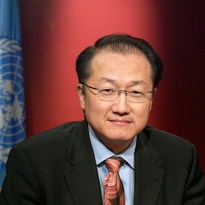In a speech in early April, World Bank President Jim Yong Kim declared that “extreme poverty,” defined as living on less than $1.25 a day, could be eradicated worldwide by the end of the next decade. In an email interview, Charles Kenny, a senior fellow at the Center on Global Development who has written on the Millennium Development Goals, discussed what ending extreme poverty means, and what it would take.
WPR: What is the technical meaning behind World Bank President Jim Kim's recent call to "end extreme poverty" by 2030?
Charles Kenny: Kim is suggesting that we can reduce the number of people living on less than $1.25 a day from about 43 percent of the developing world in 1990 and 21 percent in 2010 to around 3 percent of the total global population by 2030. And that 3 percent, he suggests, will be made up of people who are temporarily subsisting on less than $1.25, rather than permanently stuck there.

